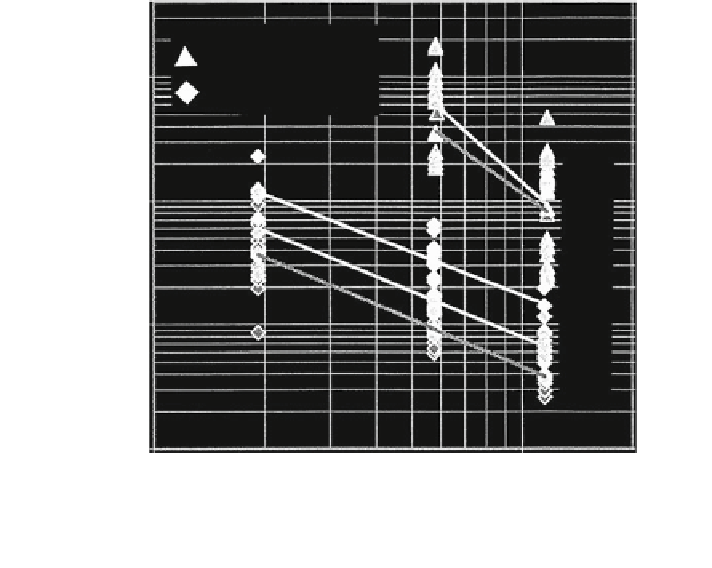Civil Engineering Reference
In-Depth Information
10
6
round groove
with unloading
multi-layer spooling
D/d =
25
20
10
5
40
10
4
25
20
10
3
10
1
10
2
specific tensile force S/d
2
Fig. 3.52 Breaking number of rope bending cycles under multi-layer spooling and in steel
sheaves with round grooves r = 0.53d, Weiskopf et al. (
2005
)
is large and therefore the bending stress is small. A dip in the number of bending
cycles exists in this case at a deflection angle
#
D,dip
& 20. As is to be expected,
that corresponds to the deflection angle D
#
= 19.7 arising out of Häberle's
(
3.29
). The reason for this dip in rope endurance is that the line pressure—which
has been more or less concentrated on one point up to this angle—as reached its
maximum and the radius of the rope curvature reaches that of half of the sheave
diameter producing the full fluctuating bending stresses, see Sect.
3.1.6
. The
critical deflection angles from Müller's bending fatigue tests and Häberle's pres-
sure measurement tests are nearly the same, but it should be noted here that the
ropes used for the two groups of tests did not have the same construction.
For bigger deflection angles over about 60, the number of bending cycles is
more or less constant, Fig.
3.53
. On looking at the second abscissa in Fig.
3.53
, the
ratio of the rope contact length and the rope lay length, it is however imaginable
that there may be a slight influence on the number of bending cycles. Donandt
supposed such an influence to exist as Woernle (
1934
) reported. Jurk (
1973
) found
such an influence for this ratio which was only slight on the number of bending
cycles but great on the number of wire breaks.

Search WWH ::

Custom Search